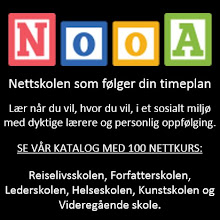Since video lectures seem to pop up all over the Internet, I wonder how this phenomenon will influence future distance and e-learning. Personally, I notice that an increasing number of presentations by EDEN colleagues are available as online videos, but I ponder if university resources are well spent on mass production of web lectures.
At the annual EDEN conference in Valencia, the Plenary Sessionswere recorded by Elluminate. In March, I gave a presentation at Bodø University College. If you understand Norwegian, you may see the presentation Transparens i nettbasert utdanning from a Mediasite server. Educational institutions use a range of additional products and services such as Itunes U, YouTube, Matterhorn and Camtasia to make lectures available on the web. This is good for educational transparency and flexibility. But are everyday lectures worth while distributing via the web – or is it wiser to spend some of the resources on developing better or alternative instructional content?
In September, I attended a thought provoking conference at the University of Oslo which featured several international presentations on video lectures. Videos of the presentations are of course available online.
Marianne Talbot, from the University of Oxford, presented her reflections on her very successful philosophy course which ranked number one of the top downloads from ITunes U. Gilly Salmon, who is on the EDEN EC, gave an interesting presentation titled The renaissance for voice: Transforming learning and Maria Hancock and Ben Hubbard from UC Berkeley gave the presentation Fifteen years experience with podcast.
Summing up the conference in my video presentation, I indicated that future students will make much more innovative web2.0 presentations than most video lectures we see today. A lot of students already have their own YouTube channels. Others may use Slideshare to publish longer videos such as I have done atwww.slideshare.net/MortenFP/videos
The key note presentations at this year’s annual conference of the Norwegian Association for Distance Education were also video taped. You may see EDEN NAP-member Grainne Conole’s presentationTowards new forms of open, social and participatory learningand Jane Hart’s talk on The Social Learning Revolution. Those who understand Norwegian may also watch my presentation Læring for åpen scene.
Video presentations on the web could be of various formats and qualities as you see below. The first video embedded presents an interview I made with Portuguese television made by professionals. The others are amateur video scenes from a presentation I did at the Futuralia conference in Lisbon - made by a student in the audience. In the future, we will see many more videos like these. Maybe 2010 initiated an industrial revolution of video lectures on the internet.

Very good educational blog. I liked it very much.
ReplyDelete1 to 1 Home Tuition Services in Singapore & Experienced Home Tutors
Smart post buddy! I will make the most of this information and spread it amongst my friends too!
ReplyDeleteArt to Admire